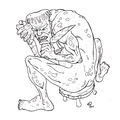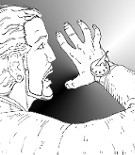Template:Selected anniversaries/February 11: Difference between revisions
No edit summary |
No edit summary |
||
| Line 35: | Line 35: | ||
||Wolfgang Gröbner (b. 11 February 1899) was an Austrian mathematician. His name is best known for the Gröbner basis, used for computations in algebraic geometry. However, the theory of Gröbner bases for polynomial rings was developed by his student Bruno Buchberger in 1965, who named them for Gröbner. | ||Wolfgang Gröbner (b. 11 February 1899) was an Austrian mathematician. His name is best known for the Gröbner basis, used for computations in algebraic geometry. However, the theory of Gröbner bases for polynomial rings was developed by his student Bruno Buchberger in 1965, who named them for Gröbner. | ||
||Claude Chevalley (b. 11 February 1909) was a French mathematician who made important contributions to number theory, algebraic geometry, class field theory, finite group theory, and the theory of algebraic groups. Pic. | |||
||1915 – Richard Hamming, American mathematician and academic (d. 1998) | ||1915 – Richard Hamming, American mathematician and academic (d. 1998) | ||
Revision as of 18:04, 20 March 2018
1617: Mathematician, cartographer, and astronomer Giovanni Antonio Magini dies. He supported a geocentric system of the world, in preference to Copernicus's heliocentric system.
1618: Writer and alleged troll Culvert Origenes publishes his essay Man's Inhumanity to Man, which will profoundly influence three generations of Enlightenment-era thinkers.
1650: Mathematician and philosopher René Descartes dies. He is remembered as the father of modern Western philosophy.
1847: Inventor, engineer, and businessman Thomas Edison born. He will develop the light bulb and the phonograph, among other inventions.
1884: Set theorist and crime-fighter Georg Cantor saves Edward Lear from attack by math criminals.
1898: Physicist and academic Leo Szilard born. He will conceive the nuclear chain reaction in 1933, and patent the idea of a nuclear reactor with Enrico Fermi.
1930: Mathematician, statistician, and crime-fighter Oskar Anderson publishes new theory of mathematical statistics based on Gnomon algorithm functions with applications in the detection and prevention of crimes against mathematical constants.
1931: Engineer and inventor Charles Algernon Parsons dies. He invented the compound steam turbine, and worked on dynamo and turbine design, power generation, and optical equipment for searchlights and telescopes.
- Charles Critchfield ID badge.gif
1944: Mathematical physicist and crime-fighter Charles Critchfield uses burst of neutrons to detect and prevent crimes against physical constants.
1973: Nuclear physicist and Nobel Prize laureate J. Hans D. Jensen dies. He shared half of the 1963 Nobel Prize in Physics with Maria Goeppert-Mayer for their proposal of the nuclear shell model.









